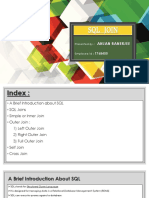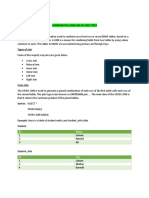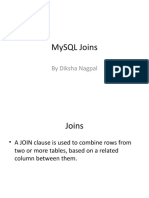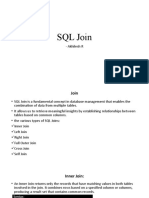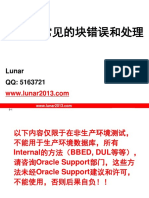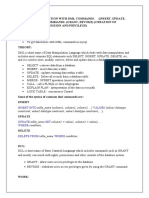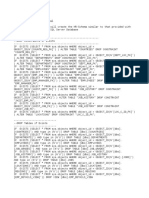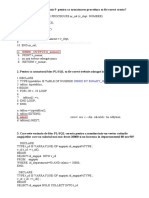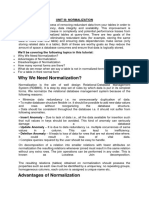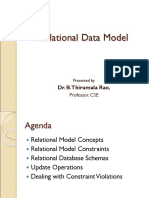0% found this document useful (0 votes)
80 views6 pagesTranscript: SQL Joins What Is SQL Join?
SQL joins combine rows from two or more tables. The main types of joins are inner joins, outer joins (left, right, full), natural joins, cross joins, and self joins. Inner joins return rows where there are matches between tables, outer joins return all rows and matched rows, natural joins match on identically named columns, cross joins perform a cartesian product, and self joins match a table to itself.
Uploaded by
s.mishraCopyright
© © All Rights Reserved
We take content rights seriously. If you suspect this is your content, claim it here.
Available Formats
Download as DOCX, PDF, TXT or read online on Scribd
0% found this document useful (0 votes)
80 views6 pagesTranscript: SQL Joins What Is SQL Join?
SQL joins combine rows from two or more tables. The main types of joins are inner joins, outer joins (left, right, full), natural joins, cross joins, and self joins. Inner joins return rows where there are matches between tables, outer joins return all rows and matched rows, natural joins match on identically named columns, cross joins perform a cartesian product, and self joins match a table to itself.
Uploaded by
s.mishraCopyright
© © All Rights Reserved
We take content rights seriously. If you suspect this is your content, claim it here.
Available Formats
Download as DOCX, PDF, TXT or read online on Scribd
/ 6


